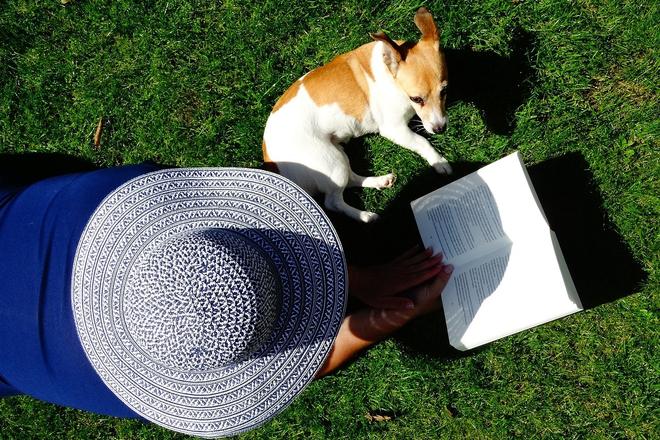To start a new chapter of your life in a new country where everything may seem unusual and incomprehensible, you need to equip yourself with new words (and even new letters) to be able write this chapter. I've learned myself that it's not necessarily easy. Still, it's the best way, and often a necessary step, for a newcomer - like me - to become part of the new world around them.
I have a sufficiently vast experience of travelling abroad and long-term life in foreign countries. So, as time flew by, I managed to develop an algorithm for myself with the help of my dog. In part, he helps me get through the adaptation process as quickly as possible, and with minimal emotional costs.
Of course, speaking a new language from the start would be ideal. But as we know, it takes a lot of time, especially if you're getting older. Life - and integration - can't wait that long, right?
In Slovakia, my new home, I must have communicated with Slovak people almost from my first day in the country. I usually handled a situational conversation easily, even without speaking Slovak, so I at first didn't feel any language discomfort. Slovak is very similar to Ukrainian, in particular if people speak slowly. And when you add up non-verbal communication, the language barrier might gradually disappear. In fact, it's enough to use just a few Slovak words or phrases in a conversation for contact to be established. Slovaks are very empathetic, ready to help when you ask them politely and make it clear that their help is very important. A friendly smile, a kind voice, or “thanks” at the end of the conversation are all small, but very helpful tips if you can't find the right word in a foreign language.
But as I have said, my dog, Pablo (he's a Jack Russell terrier if anyone's asking!) helps me lot with integration into the Slovak community. He's very cute. It may thus come as no surprise that he often receives compliments from random people. Moreover, these situations often spark a short conversation. Conversations with other dog lovers and owners is a whole different story; when we start talking about dogs, the language barrier doesn't exist any more.
A case in point: Once I was walking Pablo around Lake Štrkovec in Bratislava and I encountered a man of my age walking his dog. Word by word, we started talking about a range of topics. From summer activities on the shores of the lake to the MH17 aircraft crash, for more than half an hour in a kind of Slovak-Ukrainian dialect. We understood each other. Another time, I spoke to an older lady with a Labrador who was waiting for her granddaughter. She told me that she'd ordered a children's book online and was heading to the bookstore to pick up the book. I understood everything!
This is how Pablo helps me find new friends in our neighbourhood as well as learn new words and phrases in Slovak at the same time.
Of course, my daughter, Tamara, and I also use the classic way of learning Slovak. A few weeks ago, we started an online language course. We watch Slovak TV channels (sports channels are my favourite!). When I go out, I read signs, advertisements, announcements and so on. I listen to people on public transport and shops (even though I know I shouldn't).
All these steps I take make me feel more comfortable in Slovakia.
The most important thing is to overcome internal obstacles, to not be afraid of making blunders. Remember: If a mistake happens, just accept it with a smile on your face.

